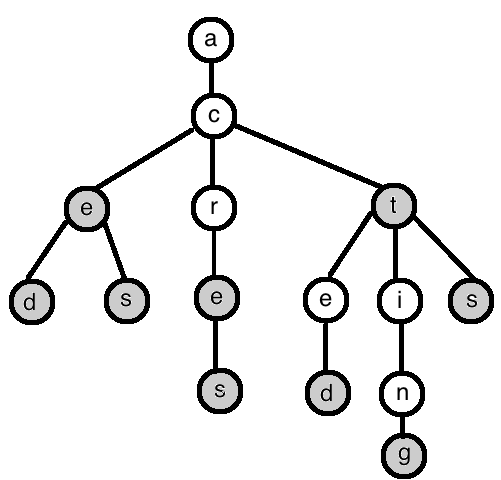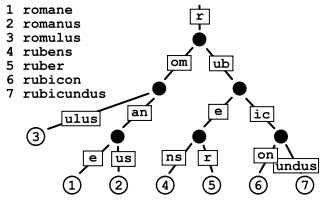- Javascript with Prototypes
- Basic recursive data structures
To run your app specs you can first install jasmine-node
npm install -g jasmine-node
or you can install your dependencies
npm install
and then run the test using
npm test
If you want to play with the autocompleter.js you need to open your node console in terminal and set Autocompleter = require("./autocompleter.js"). Then you create a new instance of Autocompleter
var autocompleter = new Autocompleter
and run autocompleter.readFile("./mini_titles").
Your project this weekend is to use your knowledge of recursive data structures and javascript to make an autocompletion engine. I've included in this repo a selection of titles of wikipedia articles. You will write a frontend to display an input field to the user and as the user types letters, you will display to them all of the possible completions of their query. I've set up code which will automatically retrieve the dataset specified on line 16 of app.rb and add it to an Autocompleter object in the browser. You will also write a Trie-based backend for this Autocompleter object to replace the current, inefficient, array implementation. When you're writing your Trie, you can put autocompleter.js into Trie mode by swapping the sets of lines which are commented out.
A Trie is a tree which stores strings as paths through the tree. The following trie contains the words:
ace, aced, aces, acre, acres, act, acts, acted, acting.
I've provided fairly comprehensive specs which you can run with rake jasmine.
mini_titlescontains 535 lines
The full dataset, not included here, is about 70MB and 4 million lines.
I have a spec for this compressed trie behavior here: https://gist.github.com/rsofaer/9418331

